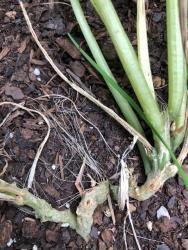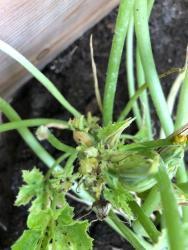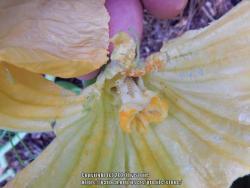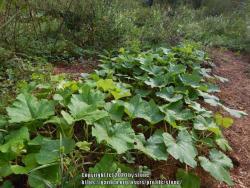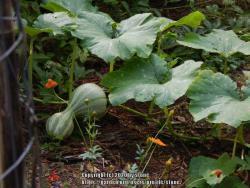This is the sad story of how I failed no fewer than five squash plants this season. I'm seeking advice in hopes to do better the next time around.
I started this season with a straightneck squash seedling from Lowes, which I planted in my raised bed. It quickly got crispy and ashy around the edges, which I think was the result of my lack of understanding on how to fertilize it right. I replaced it with a crookneck seedling, also from Lowes.
I also started three acorn squash from seed nearby in hopes that one of them would grow, and all three did. For a while, earlier on in the season, they seemed to be doing well. When a home soil test indicated that the soil needed nitrogen, I planted cowpeas around the squash to give them that boost.
This may have been a big mistake. The cowpea plants grew big and tall, and might have shaded out the squash plants. I noticed they were growing blossoms on very tall stalks, but that they weren't fruiting. One acorn squash plant yielded a small fruit that came off the vine when it was still tender enough to be eaten raw--the consistency of a zucchini. The same plant yielded a fruit that grew bigger and had developed a dark green skin, but then I pulled a green caterpillar right out of its side. After that, the pill bugs just descended on it and ate it alive. (I didn't even know that pill bugs ate garden plants).
I pulled the crookneck and one of the acorn squash plants for dead two weeks ago, and pulled the other two today. In addition to the pill bug damage on the one fruit, the leaves looked dry, ashy, and scorched (I haven't added fertilizer in a long while, so that's not it this time), and the places where the blossoms would normally be looked slimy. The vines looked dry and stringy, and like they were trying to pull themselves out of the ground. I've included pictures of the damage here.
So, having so epically failed: What can I do to prevent these problems the next time around? I live in Atlanta; is it possible to try for a fall planting, or should I wait for spring? Your thoughts are truly appreciated.

